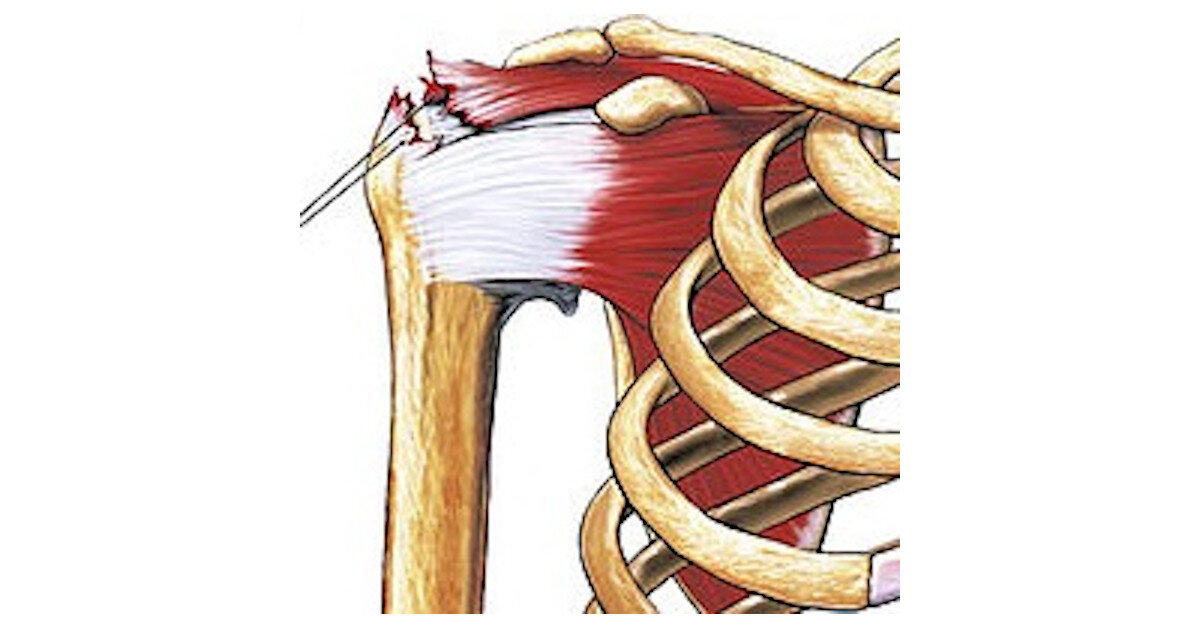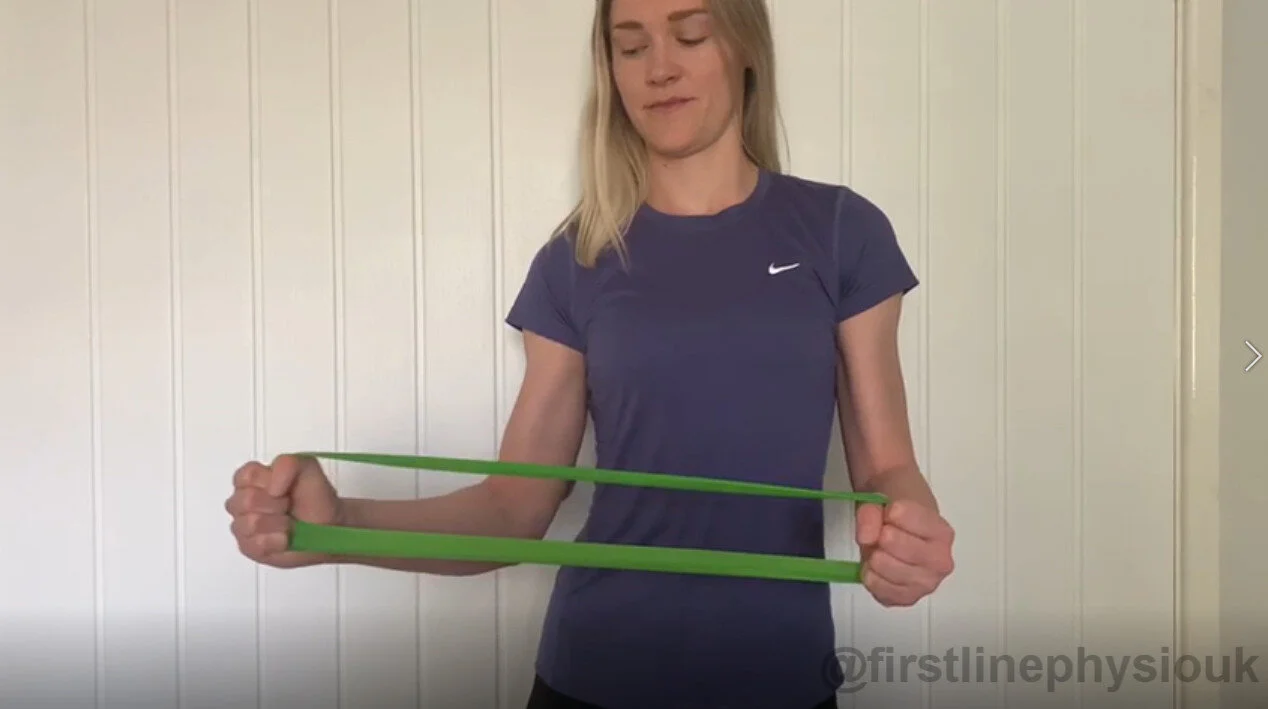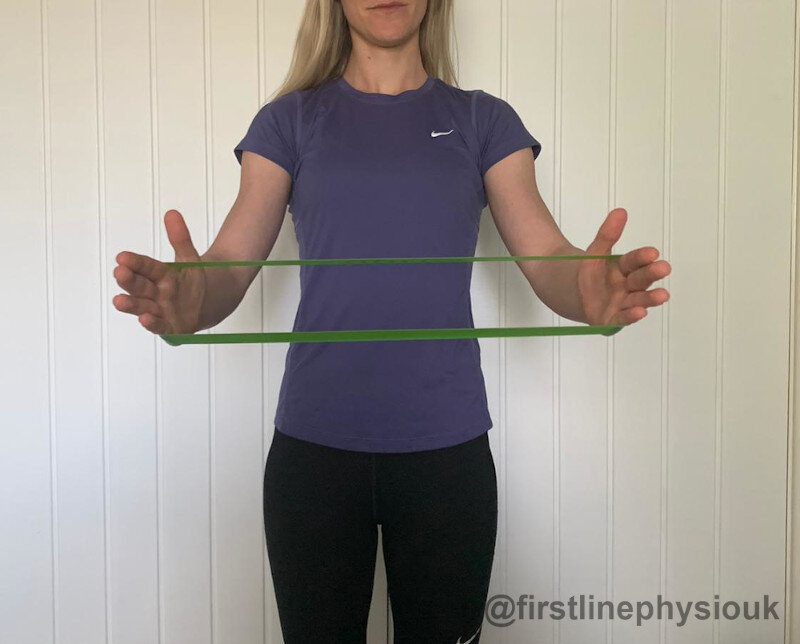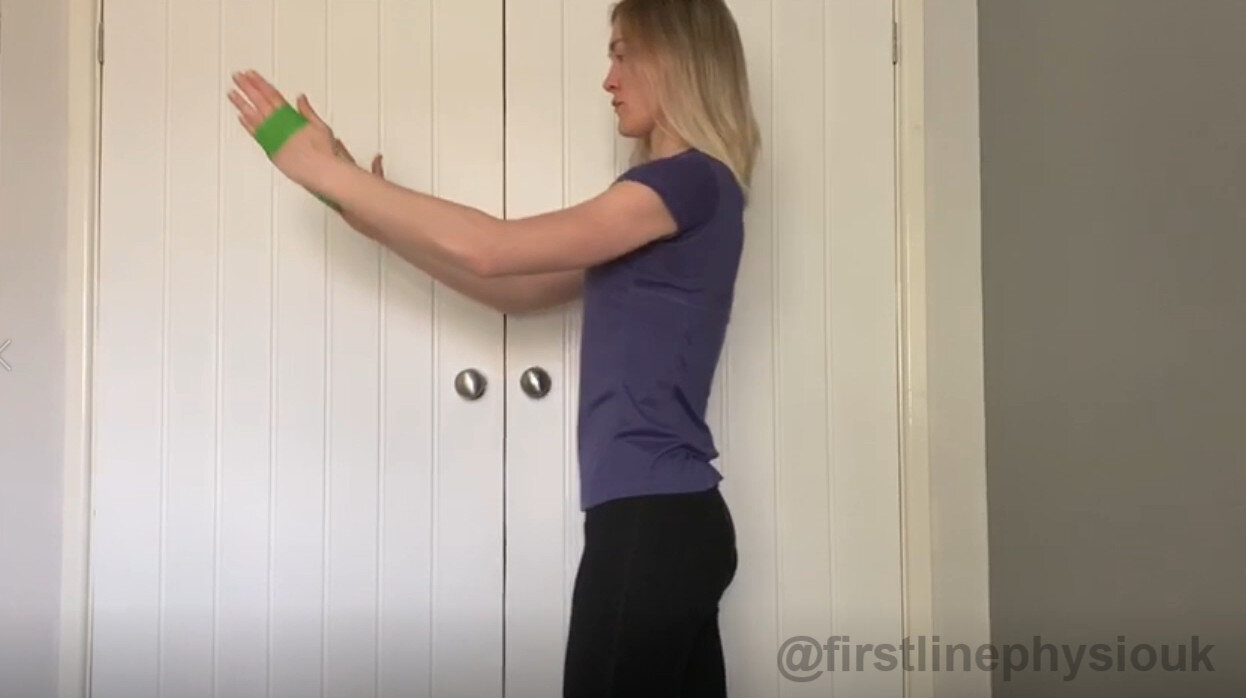How can physio help with Rotator Cuff tears?
Physiotherapists have been treating patients with rotator cuff tears of the shoulder for years. A lot of tears do not require surgery, and physiotherapists can assess and treat the resulting weakness and tightness with specific exercises. Here we explore the different types of tear and how physiotherapy can help.
The rotator cuff is a group of four muscles which play a vital role in providing stability to the shoulder joint. They help to lift and rotate your arm, and keep it in place in your shoulder socket.
There are different types of rotator cuff tear:
Traumatic rotator cuff tear (acute)
These tend to occur in younger patients (less than 40 years old) and are caused by injuries such as falling on an outstretched arm or lifting something too heavy.
Traumatic rotator cuff tears can also occur if you have dislocated your shoulder, as the force this creates can pull the muscle or tendon, causing it to tear.
The pain starts immediately after the injury and is usually associated with a sudden lack of movement and strength.
If you have recently fallen or injured your shoulder and are struggling to move your arm due to a lot of pain and weakness, it is worth having an x-ray to rule out any fractures to the bone.
Degenerative rotator cuff tears (chronic)
These are tears caused by wearing down of the tendon and occur slowly over time - “wear and tear”. This happens naturally as we age as we have less blood supply to our tendons.
Another factor which can contribute to tears are bone spurs which develop around the shoulder in some people as they get older. These can irritate the tendon and cause it to break down and tear.
Rotator cuff tear by Nucleus Communications is licensed under CC BY 4.0
Jobs, sports or hobbies with repetitive arm movement (especially overhead), can increase the risk of a condition called shoulder impingement, which you can read about in our previous blog. This can lead to stress on the tendons.
Over time, small tears may develop from repetitive stress as the tendons rub and catch. Due to the reduced blood supply, these can take a while to heal, which leads to reduced strength in the shoulder. This can then lead to further tears with activity.
The pain with degenerative tears develops more gradually, and often people will experience a slow reduction of strength over time.
Traumatic AND degenerative tear (acute on chronic)
Sometimes there can be some crossover with these two types of tear. Degenerative tears caused by the natural aging process can cause the tendon to fray over time and become weak.
This can lead to the risk of an acute tear from reasonably minor trauma which would not usually be expected to cause a problem, such as lifting up a shopping bag.
What can I do about a rotator cuff tear?
Some traumatic rotator cuff tears may require surgery, which we will cover in a later blog. However, most degenerative tears do not require surgery, and around 73-80% improve with non-operative treatment.
If you think you may have a rotator cuff tear - go and see a physiotherapist. They will be able to assess your shoulder and rule out other conditions which can present in the same way, such as frozen shoulder or shoulder impingement.
Early treatment is key for these conditions, as a lot of people develop abnormal movement patterns due to changes in the muscle balances around the shoulder. This can lead to your shoulder “hitching” up due to tight muscles in your neck, or being pulled forwards by tight chest muscles. Your physiotherapist will be able to assess these and provide stretches or manual techniques such as massage to help improve this.
Exercises for improving shoulder movement
Often with rotator cuff tears there is a lack of movement in the shoulder. One major goal with physiotherapy is to improve movement. There are plenty of exercises which can help you to achieve this, at different levels depending on the severity of the tear and the weakness of the shoulder. Speak to your physiotherapist to determine which level is best to start at for you. They can work alongside you to slowly progress these when you are ready.
Exercises for strengthening the rotator cuff
Because you have several muscles all working together in the shoulder, it is possible to regain movement and strength with exercises, even after a tear. Always speak to a physio before starting any exercise. There are LOADS of shoulder strengthening exercises. Again, there are different levels of strengthening depending on the severity of the tear and the amount of weakness in the shoulder.
Isometric exercises are when the muscle contracts under tension but there is no movement of the joint and so no shortening or lengthening of the muscle. They are a really good starting point for strengthening the rotator cuff as often movement can be very painful following a tear.
Isometric external rotation
Standing with the elbow of your affected arm tucked into your side and bent at around 90 degrees.
Bring the palm of your other hand to the back of your affected hand.
Gently push the affected hand outwards into the palm of the other hand. Resist the movement with the other hand. Keep your elbow tucked in by your side. There should be no movement, only tension in the shoulder and arm.
Hold for 15-30 seconds.
Repeat 3-5 times, frequently throughout the day.
Isometric abduction
Stand side on to the wall with your affected arm nearest the wall.
Bend your elbow and bring your arm slightly away from your body and in front of you.
Gently push into the wall with your forearm.
Hold for 15-30 seconds.
Repeat 3-5 times, frequently throughout the day.
It’s important to monitor the pain as you complete these. Some discomfort is expected as you are working the injured area. However, pain during the exercise should be no more than around a 4/10 (on a scale where 0 is no pain and 10 is the worst pain imaginable).
As these start to become easier, you will slowly be able to increase the amount you can do. Once you find that you are able to complete a day of exercises without any pain, you can progress to the next stage. There are lots of different progressive exercises, but we have included 2 of our favourites for strengthening the rotator cuff.
External rotation with resistance band
Standing with both elbows tucked into your side and bent at 90 degrees.
Loop a band around your wrists.
Keeping your unaffected arm still and steady, slowly rotate the other arm out to the side.
Slowly bring it back to the middle.
Repeat 15 times.
If you don’t already have resistance bands, you can get a great set from Gritin Resistance Bands - see the link to buy from Amazon. This is a set of 5 bands with varying resistances, which is great as you can work your way up (we are using the extra light one in the video).
*This is the equipment that we use and recommend fully. You won’t pay a penny more, but First Line Physio will earn a small commission if you purchase the equipment following this link. This contributes to the running costs of the blog.*
Y band raises
Standing with both elbows tucked into your side and bent at 90 degrees. Loop a band around your wrists.
Straighten your elbow slightly and pull the band outwards. Keep your thumbs pointing up.
Keeping the tension on the band, slowly lift your arms up. As you do so, take a small step forwards with one leg. Aim to get to around 3/4 of shoulder movement, but start lower if this is painful.
Then slowly lower your arms. Make sure that your hands stay the same distance apart on the way up and on the way back down.
Repeat 15 times.
There are loads of other exercises for the rotator cuff and it is always best to speak to a physiotherapist before commencing a programme to ensure that you have exercises tailored to you.
Rehabilitation from a rotator cuff injury can be slow. This is especially true if you have had the problem for a while, as your body will have been compensating for the weakness in other areas, and a period of “retraining” needs to occur. Be patient, but usually within 12 weeks you should notice differences in your movement, strength, pain, or all three of these!
In addition to diagnosing your shoulder problem, improving the movement and the strength and getting you back to your previous level of function, physio’s can also work with you to prevent the risk of you injuring your shoulder again. This may be modifying your current habits, working on your posture or discussing safer lifting techniques.
This is absolutely not written to substitute medical advice and it is always important to see a qualified health care professional for a formal diagnosis. If the exercise cause pain during or after completion, discontinue and consult a physiotherapist.
If you would like to get in touch please visit our contact page.
*We are a participant in the Amazon Services LLC Associates Program, an affiliate advertising program designed to provide a means for us to earn fees by linking to Amazon.com and affiliated sites








